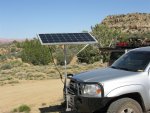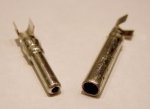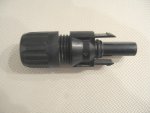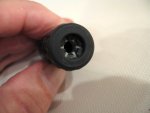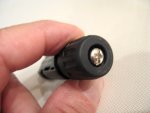Good to know, I like this potential.
Loose MC4's take a special crimping tool don't they? I suppose if/when I go forward if I found a local source they could just crimp them on my pigtail if I wanted, otherwise I'm not interested in getting the tool for a 1 off deal.
The reason I didn't necessarily want them is I viewed them as 1 extra connection and an unneeded cost based on the parts I was showing above.
The reason I used them is they are a very solid connector and they're waterproof (there is an o-ring in the plug and a compression seal around the feed wire). Out of the weather, I just used 30A Anderson Power poles and various crimp connectors. MC-4 plugs are a bit of an overkill on a mobile installation, but they do their job very very well and are ideal for trail use. I'll consider them for future applications where I need a weather proof plug that is guaranteed not to come loose. Once you figure them out, the plugs are very simple to use.
MC-4 connectors do have a special crimping tool, and they're not cheap by any means. The place I bought them offered to crimp them on for me but that wasn't convenient. Like you, I really wasn't interested in buying a special tool for the few connectors I needed. Fortunately, you don't really need the crimp tool. I just inserted the 8AWG wire into the metal male/female connector, wrapped the tabs around the wire with a needle nose pliers, and soldered them. It took me about 10 seconds a connector and I prefer solder to crimps anyway. Don't forget to slide the plastic part onto the wire first

The downside to the plug is that they're designed to stay connected -- during tornados, apparently -- and a special tool is used to disconnect them. Unfortunately, the tool is sold only with the crimper, as far as I can find locally anyway. The tool is just a plastic gap wrench (--= ) which compresses the ears on the male plug enough to slide them past the detents on the female plug. I was able to disconnect them using a needle nose pliers and some cuss words a few times. After doing that a few times, I realized I just needed to file the detent's ears down a skoshie so that I could use my fingers to depress the ears and separate the plugs. They are still very solid fitting and I no longer shock the neighbors when taking them apart.

As my system is portable, I also used a set of MC-4 plugs as "dummy plugs" to seal the ends of the connecting cable in my bumper area that is exposed to mud, water, salt, etc. On the dummy plugs, I just inserted a short machine bolt into the compression ring and tightened it down a bit. I put the dummy plugs on when the solar panel isn't installed and it keeps the connections clean and dry.



